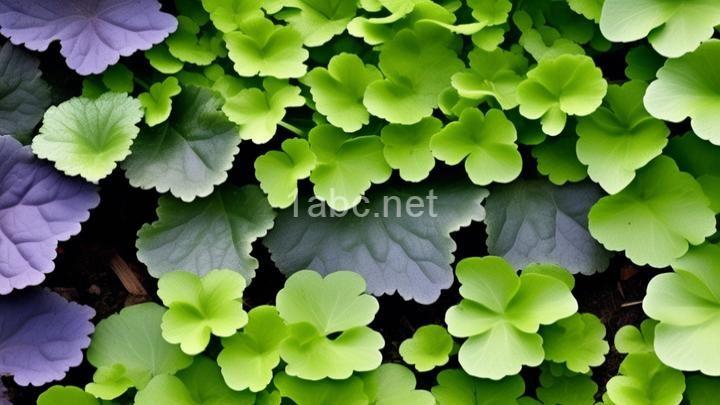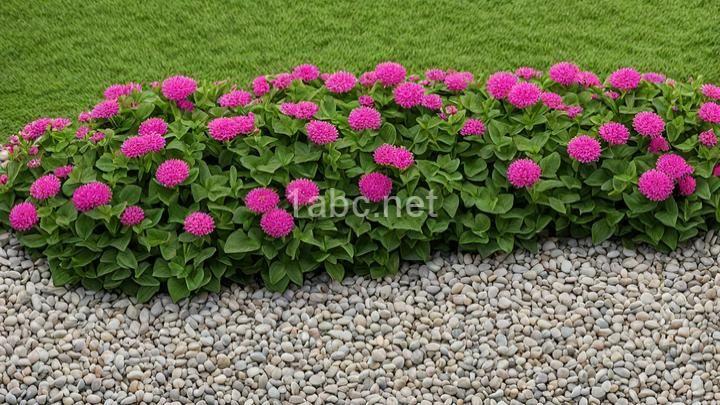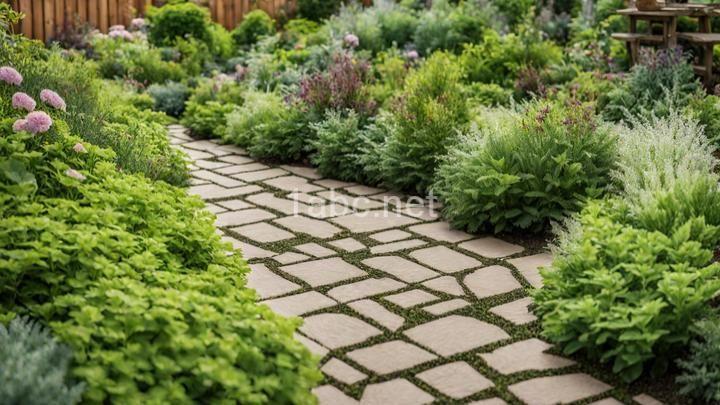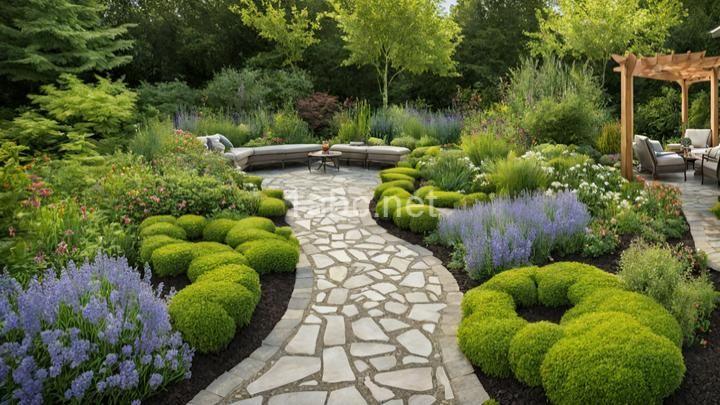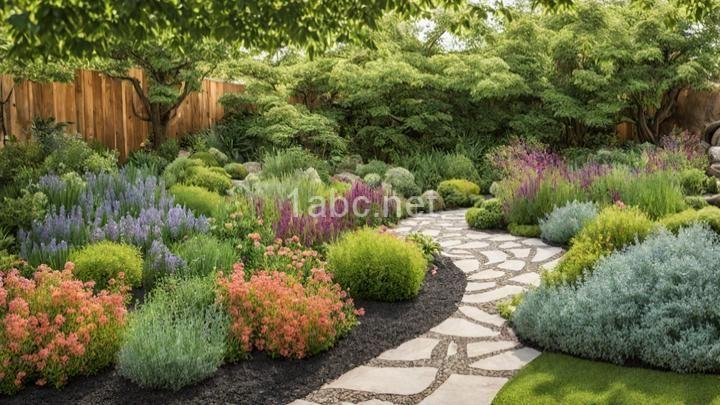The Benefits of Using Ground Covers in Low-Maintenance Gardens
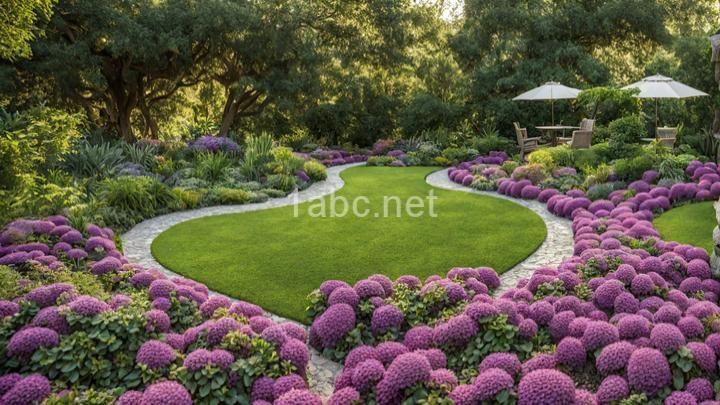
Introduction:
Welcome to our blog post on the benefits of using ground covers in low-maintenance gardens! Are you tired of spending countless hours weeding and maintaining your garden? Do you dream of a lush, beautiful garden that requires minimal effort? If so, then incorporating ground covers into your garden may be the solution you've been searching for. In this blog post, we will explore what ground covers are, the advantages they offer, popular options, and how they can transform your gardening experience.
I. What are Ground Covers?
Ground covers are low-growing plants that spread horizontally to cover the soil. They serve multiple purposes in gardens, including suppressing weeds and preventing erosion. These plants act as living mulch, forming a dense carpet-like covering that inhibits the growth of unwanted weeds. Additionally, ground covers enhance the overall aesthetics of a garden by adding texture, color, and depth.
II. Advantages of Using Ground Covers:
A. Weed Suppression:
One of the primary benefits of using ground covers is their ability to suppress weeds naturally. The dense growth of these plants prevents sunlight from reaching weed seeds, inhibiting their germination. By acting as a natural barrier, ground covers significantly reduce the need for manual weeding. This saves gardeners valuable time and effort that can be redirected toward enjoying their garden rather than maintaining it.
B. Erosion Control:
Ground covers play a crucial role in protecting soil from erosion caused by wind or heavy rain. Their extensive root systems hold the soil together, preventing it from washing away. This is especially important for sloped areas or gardens located in regions with high rainfall. By preventing erosion, ground covers help maintain healthy garden beds and ensure the longevity of your plants.
C. Moisture Retention:
In addition to weed suppression and erosion control, ground covers also help retain moisture in the soil. Their dense growth acts as a natural mulch, reducing water evaporation and providing a consistent level of moisture for plants. This is particularly beneficial during dry periods when water conservation becomes a priority. By using ground covers, you can save on irrigation costs while promoting the overall health of your garden.
D. Improved Soil Health:
Ground covers have the remarkable ability to improve soil structure over time. As they spread and grow, they add organic matter to the soil, enriching it with essential nutrients. This process enhances soil fertility and promotes beneficial microbial activity, creating a thriving ecosystem beneath the surface. By incorporating ground covers into your garden, you can naturally improve soil health and provide a nourishing environment for your plants.
III. Popular Ground Cover Options:
Now that we understand the advantages of using ground covers let's explore some popular options that are suitable for low-maintenance gardens:
A. Creeping Thyme:
Creeping thyme is a fragrant ground cover that produces small, colorful flowers. It is drought-tolerant, making it ideal for dry climates. In addition to its aesthetic appeal, creeping thyme emits a pleasant aroma when stepped on, adding sensory delight to your garden.
B. Irish Moss:
Irish moss, also known as sagina subulata, forms a dense mat of tiny, delicate leaves. It thrives in moist, shady areas and adds a touch of vibrancy to your garden with its bright green color. Irish moss is an excellent option for those looking to create a lush, moss-like appearance.
C. Creeping Jenny:
Creeping Jenny, or lysimachia nummularia, is a fast-growing ground cover with vibrant yellow leaves. It thrives in both sun and shade and can tolerate wet soil conditions. Creeping Jenny cascades beautifully over edges and walls, creating a cascading effect and adding a pop of color to your garden.
D. Vinca Minor (Periwinkle):
Vinca minor, commonly known as periwinkle, is a hardy and versatile ground cover. It features glossy green leaves and produces beautiful blue or purple flowers. Vinca minor is a reliable option for those looking for a low-maintenance ground cover that can thrive in various soil types and light conditions.
E. Bugleweed:
Bugleweed, or ajuga reptans, is a low-growing ground cover with striking foliage and vibrant flowers. It comes in various colors, including shades of purple, blue, and pink. Bugleweed is an excellent choice for areas with partial shade and adds a touch of elegance to any garden.
When selecting a ground cover for your garden, it is essential to consider factors such as sunlight, soil conditions, and overall garden aesthetics. Researching each option further will help you find the best fit for your specific garden conditions.
Conclusion:
In conclusion, incorporating ground covers into your low-maintenance garden offers numerous benefits. From weed suppression and erosion control to moisture retention and improved soil health, ground covers provide long-lasting advantages that can transform your gardening experience. By selecting popular options like creeping thyme, Irish moss, creeping Jenny, Vinca minor, or bugleweed, you can create a beautiful and low-maintenance garden that requires minimal effort. So why not give ground covers a try and enjoy the many benefits they offer? Thank you for joining us on this gardening journey, and we wish you much success in creating your dream garden!
FREQUENTLY ASKED QUESTIONS
What are ground covers?
Ground covers are low-growing plants that are used to cover bare soil and prevent soil erosion. They are typically planted in gardens, landscapes, or along walkways to create a visually appealing and functional ground cover. Ground covers not only add beauty to outdoor spaces but also help to suppress weeds, retain soil moisture, and provide protection for the soil against temperature fluctuations. They come in a wide range of varieties, including flowering ground covers, evergreen ground covers, and creeping ground covers.
Why should I consider using ground covers in my garden?
Ground covers offer several benefits that make them worth considering for your garden:
- Weed suppression: Ground covers provide dense coverage that prevents weed growth. They block sunlight from reaching the soil, inhibiting weed seed germination and reducing the need for manual weeding.
- Moisture conservation: Ground covers act as a natural mulch, helping to retain soil moisture by reducing evaporation. They also prevent erosion by holding the soil in place during heavy rain.
- Soil protection: These plants protect the soil from eroding due to wind or water. Their roots help stabilize the soil structure, preventing it from being washed away or degraded.
- Enhanced aesthetics: Ground covers can add texture, color, and visual interest to your garden. With a wide variety of options available, you can choose ground covers that complement your existing plants and landscape design.
- Reduced maintenance: By replacing areas of bare soil with ground covers, you can reduce the amount of time and effort required for lawn mowing or regular soil maintenance. Ground covers generally require less water, fertilizer, and maintenance compared to traditional lawns.
- Wildlife habitat: Some ground covers attract beneficial insects like bees and butterflies, which can help with pollination in your garden. They also provide shelter and food sources for small wildlife such as birds or rabbits.
Overall, ground covers offer both practical and aesthetic benefits, making them a valuable addition to any garden.
What are the benefits of using ground covers?
Using ground covers offers several benefits, such as:
- Weed suppression: Ground covers help to suppress the growth of weeds by smothering them and limiting their access to sunlight. This reduces the need for manual weeding and herbicide usage.
- Soil erosion prevention: Ground covers help to stabilize the soil by covering the surface and preventing erosion caused by wind or water. They also improve water infiltration and reduce runoff.
- Moisture retention: These plants act as a natural mulch, helping to retain moisture in the soil and reducing water evaporation. This can be especially useful in dry climates or for water-conscious gardeners.
- Improved aesthetics: Ground covers can add beauty and visual interest to the landscape. They come in a variety of colors, textures, and heights, allowing you to create unique and appealing designs for your garden.
- Soil improvement: Some ground covers, like clovers and legumes, have the ability to fix nitrogen, which enriches the soil. They can also help to improve soil structure and fertility over time.
- Reduced maintenance: Once established, ground covers generally require less maintenance than traditional lawns. They have a slower growth rate, meaning less mowing, and typically have fewer pest and disease issues.
It's important to choose the right ground cover for your specific needs and growing conditions. Some popular options include creeping thyme, English ivy, vinca, and ornamental grasses.
How do ground covers help in creating low-maintenance gardens?
Ground covers are plants that are low-growing and spread across the ground, covering the soil. They are an excellent addition to low-maintenance gardens for several reasons:
- Weed suppression: Ground covers form a dense mat that helps smother weeds and prevent them from growing. This reduces the need for manual weeding or the use of herbicides.
- Moisture retention: The dense foliage of ground covers helps retain moisture in the soil by acting as a natural mulch. This reduces the need for frequent watering, especially during hot and dry periods.
- Erosion control: By covering the soil surface, ground covers help prevent soil erosion caused by wind and water. This is particularly beneficial on slopes or areas prone to erosion.
- Reduced soil compaction: Ground covers create a protective layer over the soil, which reduces compaction caused by foot traffic or heavy rains. This helps maintain good soil structure and promotes healthy root growth.
- Aesthetic appeal: Ground covers come in a wide range of colors, textures, and forms, adding visual interest to the garden. They can be used to create attractive patterns, highlight specific areas, or serve as a backdrop for other plants.
Overall, ground covers are an excellent choice for creating low-maintenance gardens as they help minimize the time and effort required for weed control, watering, and overall garden maintenance.
